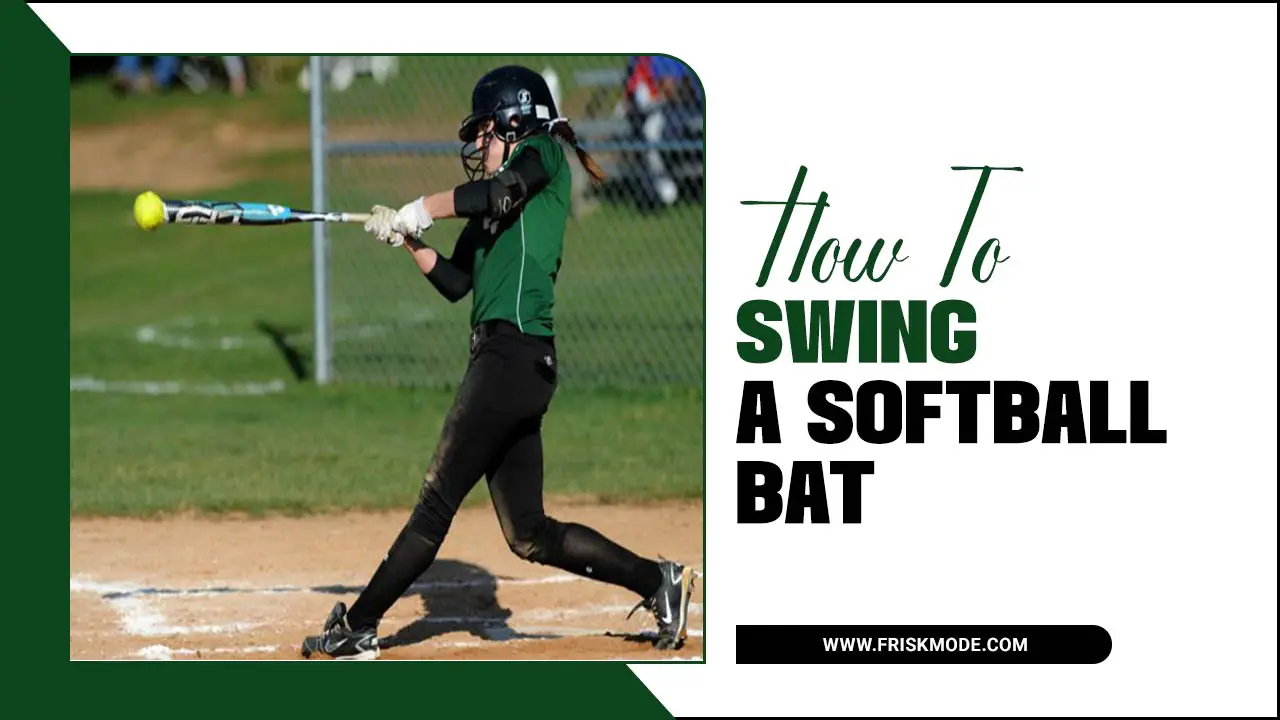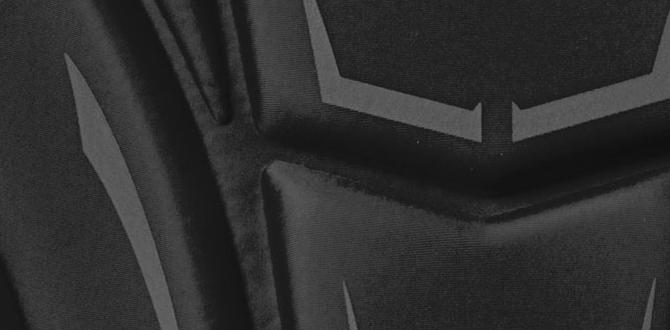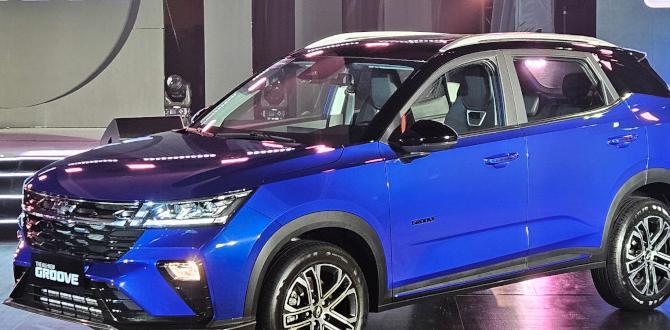Catchers shin guards for adults are crucial pieces of equipment designed to protect players’ lower legs and knees from foul tips, errant pitches, and collisions. Choosing the right pair enhances safety, comfort, and performance behind the plate.
Catching in baseball is a demanding position, and protecting yourself is the number one priority. When you’re constantly squatting, blocking, and taking impacts from pitches, your legs take a beating. That’s where a good pair of adult catcher shin guards comes in. Without them, you’re leaving yourself open to painful bruises, nasty scrapes, and even more serious injuries. But don’t worry, finding the right pair isn’t complicated. We’ll walk through everything you need to know to keep your shins safe and your game strong.
Why Catcher Shin Guards Are a Must-Have
Behind the plate, you’re the last line of defense. This means you’re in the line of fire for foul balls, wild pitches, and even accidental collisions with runners. Adult catcher shin guards act as a shield, absorbing and distributing the force of these impacts, keeping your sensitive shins and knees out of harm’s way. Think of them as your personal crash protection system.
Protecting Against Foul Tips
A foul tip is a ball that glances off the bat and goes straight back, often towards the catcher. These can travel at high speeds and hit unprotected legs with significant force. Shin guards provide a sturdy barrier, preventing painful direct impacts that can lead to bruising or worse.
Mitigating the Risk of Wild Pitches
Even the best pitchers can have an off day, leading to uncontrolled pitches. When a ball bounces in front of the plate, it can easily ricochet off your shins. Well-designed shin guards can absorb this impact, reducing the chance of injury and allowing you to stay in the game.
Safeguarding Against Collisions
Runners sliding into home plate can be a dangerous situation. While illegal collisions are less common, even accidental contact can cause damage. Shin guards offer a layer of protection against these impacts, helping to keep your lower legs from getting caught or crushed.
Enhancing Comfort and Mobility
Modern shin guards aren’t just about protection; they’re designed for comfort and agility. They often feature ergonomic designs that move with your legs, allowing for a full range of motion crucial for squatting, receiving pitches, and making throws.
Key Features to Look For in Adult Catcher Shin Guards
When you’re shopping for catcher shin guards, a few key features will make a big difference in protection, comfort, and fit. Understanding these will help you pick the best pair for your needs.
Material and Padding
The primary role of shin guards is to absorb impact. Look for guards with high-density foam padding, often reinforced with plastic or composite materials. Double-layered padding can offer superior shock absorption for extra protection. Inner linings should be moisture-wicking to keep you dry and comfortable.
Design and Coverage
Shin guards come in various lengths and designs. Some offer full leg coverage, extending up to the knee, while others focus on the shin and ankle. Ensure the guards cover the most vulnerable areas of your lower leg and provide adequate protection around the knee joint. Adjustable straps are essential for a secure fit.
Fit and Adjustability
A proper fit is paramount. Shin guards should feel snug but not constrictive. Look for guards with multiple adjustable straps, often made of Velcro or elastic, that allow you to customize the fit to your leg shape and size. This prevents the guards from shifting during play and ensures maximum protection.
Ventilation
Playing baseball can get hot, especially when you’re working hard behind the plate. Many modern shin guards incorporate ventilation systems, such as strategic vents or breathable materials, to allow air to circulate. This helps to keep your legs cooler and more comfortable during long games and practices.
Weight
While protection is key, you don’t want shin guards that are excessively heavy, as this can fatigue you quickly and hinder your mobility. Most manufacturers strike a good balance between protective padding and lightweight design.
Types of Catcher Shin Guards for Adults
While the basic function remains the same, adult catcher shin guards can differ in their construction and the level of protection they offer.
Traditional Shin Guards
These are the most common type, offering robust protection for the shin, ankle, and often extending up to cover the knee. They are typically made of sturdy plastic shells with thick foam padding. They are excellent for full game protection.
Convertible Shin Guards
Some models offer a convertible design, allowing you to detach a section of the guard, usually the knee piece, for situations where less protection is needed or for increased mobility during drills. This versatility can be a great advantage.
Lightweight/Shorter Shin Guards
For players who prioritize speed and agility, or for less intense play, there are lighter, often shorter shin guards that still offer essential protection without the bulk of full traditional guards. These are good for practice or younger adult leagues.
How to Choose the Right Size Shin Guards
Getting the right size is critical for both comfort and effective protection. Shin guards that are too small won’t cover enough of your leg, while those that are too large can be bulky, shift around, and become a tripping hazard. Most manufacturers provide sizing charts based on leg measurements.
Measuring Your Leg
Measure from the top of your kneecap down to the point where your shoe meets the ground. This will give you your total shin length.
Measure the circumference of your calf and thigh to ensure a comfortable fit for the straps and overall width.
Always refer to the specific brand’s sizing guide, as measurements can vary between manufacturers.
Ensuring a Proper Fit
Once you have your measurements, compare them to the brand’s size chart. When you try them on:
The knee piece should comfortably cover your kneecap.
The bottom of the guard should extend down to just above your shoe.
The guards should feel secure when strapped on, with no pinching or excessive pressure points.
Perform some practice movements, like squatting and bending, to ensure they don’t restrict your movement or cause discomfort.
Caring for Your Catcher Shin Guards
Proper care will extend the life of your shin guards and keep them performing at their best.
Cleaning
Wipe down the exterior with a damp cloth after each use to remove dirt and sweat.
For deeper cleaning, use a mild soap and water solution. Avoid harsh chemicals that can degrade the materials.
Allow them to air dry completely away from direct sunlight or heat, which can damage the padding and plastic.
Storage
Store shin guards in a cool, dry place. Avoid leaving them in a damp equipment bag where mold and mildew can form.
Ensure they are not stored under heavy objects that could crush or warp them.
Durability Factors
Check straps regularly: The Velcro or elastic straps can wear out. Ensure they are still gripping securely.
Inspect padding: Over time, padding can compress or break down. If you notice a significant loss of cushioning, it might be time for a replacement.
Look for cracks: Inspect the plastic shell for any cracks or significant damage, especially after hard impacts.
Maximizing Performance with Comfortable Shin Guards
Comfort directly impacts performance. If your shin guards are uncomfortable, they’ll distract you, slower your movements, and make you less effective.
Break-in Period: Like any piece of gear, shin guards may need a short break-in period. Wear them around the house or during light drills to help them conform to your legs.
Strap Adjustment: Take a moment before each game to ensure your straps are adjusted correctly. A few seconds spent here can prevent discomfort and a loss of focus later.
Temperature Regulation: Good ventilation is key to managing sweat and heat. If your current guards are too hot, consider an upgrade with better airflow.
Frequently Asked Questions about Adult Catcher Shin Guards
Q1: What is the most important factor when choosing adult catcher shin guards?
A1: The most important factor is proper protection and fit. They need to adequately cover your shins and knees and fit securely without restricting movement, ensuring you’re safe from impacts.
Q2: How often should I replace my catcher shin guards?
A2: Shin guards typically need replacement every 2-3 years, depending on usage and wear. Signs that it’s time for a new pair include cracked shells, compressed padding, or worn-out straps that no longer provide a secure fit.
Q3: Can I use youth shin guards as an adult?
A3: It’s not recommended. Adult shin guards are designed with larger proportions and offer more robust protection suitable for the higher speeds and impacts common in adult baseball. Youth guards may not offer adequate coverage or durability.
Q4: What is the main difference between beginner and advanced shin guards?
A4: Advanced shin guards often feature more durable materials, superior impact absorption technology, lighter weight, and better ventilation systems. Beginner guards focus on essential protection at a more affordable price point.
Q5: How do I clean my catcher shin guards if they smell bad?
A5: For odor control, wipe them down with a vinegar and water solution (equal parts) after cleaning with mild soap. Ensure they are thoroughly air-dried in a well-ventilated area. Some guards have removable liners that can be washed separately.
Q6: Do shin guards affect my ability to block pitches?
A6: Well-fitting shin guards should not hinder your ability to block pitches. In fact, they can increase confidence, allowing you to focus on technique rather than the fear of injury. Poorly fitting guards, however, can be cumbersome.
Q7: Where can I find reliable information on baseball catcher gear safety standards?
A7: Reputable sources for safety standards include organizations like the National Operating Committee on Standards for Athletic Equipment (NOCSAE), which sets performance standards for athletic equipment. You can often find links and information on manufacturer websites or through baseball governing bodies like Major League Baseball (MLB).
Understanding Different Padding Technologies
Manufacturers use various technologies to enhance the padding and protection in catcher shin guards. Knowing these can help you appreciate the value different models offer.
High-Density Foam
This is a standard but effective material. It’s designed to absorb and dissipate impact energy. The density means more material is packed into the same space, offering better protection without excessive bulk.
Gel Inserts
Some higher-end models incorporate gel inserts, particularly around the knee or shin areas that receive the most direct impact. Gel is excellent at absorbing shock and can also provide a more comfortable, custom fit as it molds to the leg.
Composite Plates
In conjunction with foam, plastic or composite plates are often used to reinforce the shin guard. These plates distribute impact force over a wider area, preventing pinpoint pressure that can cause injury. They are typically integrated into the outer shell.
Example of Shin Guard Features Comparison
Here’s a simplified look at how different features might be found across various adult catcher shin guard models.
| Feature | Beginner Model | Intermediate Model | Advanced Model |
|---|---|---|---|
| Padding Type | Standard Foam | High-Density Foam with Gel Inserts | Advanced Foam with Zonal Gel & Air Channels |
| Outer Shell | Durable Plastic | Reinforced Composite | Lightweight, Impact-Resistant Composite |
| Ventilation | Basic Vents | Enhanced Airflow System | Maximized Ventilation for Breathability |
| Straps | Adjustable Velcro | Wide, Secure Velcro Straps | Ergonomic, Quick-Release Straps |
| Weight | Standard | Lightweight | Ultra-Lightweight |
| Knee Protection | Integrated | Integrated/Detachable | Articulated, Removable |
The Importance of Breathability and Moisture Wicking
Behind the plate, you generate heat and sweat. Equipment that doesn’t breathe well can lead to discomfort, chafing, and increased fatigue.
Breathable Materials: Look for shin guards made with materials that allow air to pass through. Mesh sections are a good indicator of breathability.
Moisture-Wicking Liners: The inner lining of your shin guards should pull sweat away from your skin, keeping you drier. This prevents irritation and makes the guards feel better over long periods.
Considerations for Different Leagues and Levels
The level of play and league rules can sometimes influence the type of gear you might need.
Youth vs. Adult Leagues
As mentioned, adult leagues often involve faster pitches and harder-hit balls, necessitating more robust protective gear. Ensure you are using adult-sized equipment if you are an adult player.
Level of Play
Recreational/Beginner: Focus on a good balance of protection and affordability. Standard foam padding and durable plastic shells are usually sufficient.
Intermediate/Travel Ball: Higher-density padding, better strap systems, and more advanced materials offer an edge in comfort and protection.
Advanced/College/Professional: Lightweight, high-impact materials, superior ergonomic design, and maximum ventilation are prioritized.
Specific League Rules
Always check your league’s rules regarding equipment specifications. While shin guard requirements are generally standard for catchers, it’s always good practice to be sure. For instance, some youth leagues might have specific requirements on padding thickness or coverage.
Advanced Protection for the Dedicated Catcher
For those who play frequently or at higher levels, investing in premium shin guards can be a game-changer. These often incorporate cutting-edge materials and design features to offer the best possible protection and comfort.
Articulated Knee Caps
Instead of a single, rigid knee piece, advanced guards might feature articulated knee caps. These are segmented, allowing the guard to flex more naturally with your knee joint, providing better coverage and reducing restriction when you move.
Extended Shin and Ankle Coverage
Some elite models extend protection further down the shin and even wrap around the ankle to safeguard against those hard-to-anticipate foul tips or errant bounces that might otherwise slip through.
Strategic Padding Placement
Premium shin guards often feature strategically placed padding that targets high-impact zones. This means more cushioning where you need it most, without adding unnecessary bulk elsewhere.
When to Consider Upgrading Your Shin Guards
Your catcher shin guards are an investment in your health and your ability to perform. Here are some signs that it’s time for an upgrade:
Visible Damage: Cracks in the plastic shell, tearing of the fabric, or excessively compressed padding are clear indicators.
Discomfort: If your shin guards consistently cause pain, chafing, or pinching, they are no longer serving you well, and a better-fitting or more ergonomic pair is needed.
Shifting Guards: If the straps no longer hold the guards securely in place, they will not offer optimal protection and can be a hazard.
Outdated Technology: If your current guards are several years old, they may lack the advanced impact absorption and breathability features found in newer models. Technology in sports equipment constantly evolves.
* Increased Level of Play: As you improve and move to higher levels of competition, the demands on your gear increase. Upgrading can provide the enhanced protection and comfort you need to perform at your best.
Research and Reviews
Before buying, taking time to read reviews from other players and consult resources can be invaluable. Websites dedicated to baseball equipment reviews and forums where players discuss their gear can offer insights into the performance and durability of different brands and models. Websites like Baseball Almanac provide general equipment context, and many retailers also feature user reviews.
Conclusion
Choosing the right catcher shin guards for adults is about more than just buying a piece of equipment; it’s about investing in your safety, comfort, and confidence on the field. By understanding the key features, ensuring a proper fit, and caring for your gear, you can stay protected from the inevitable impacts behind the plate. Whether you’re a seasoned catcher or just starting, the right shin guards will allow you to focus on mastering your skills, making those crucial plays, and enjoying the game to its fullest. Don’t let discomfort or the fear of injury hold you back – gear up smart, play hard, and stay safe.





